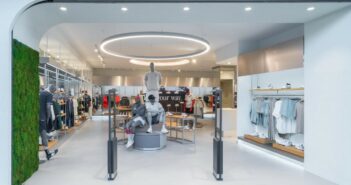Key findings from the MIPIM Asia conference, “SHOPPING MALL 3.0: INNOVATIONS IN RETAIL CENTERS”
“In Asia, malls are like public space but is privatized” Phil Kim, Managing Director, Asia Pacific The Jerde Partnership
The theme of investment income space and experience of shopping malls was the core of today’s panel. Moderator Bernie Devine started by asking what the key factors are for success, what is the next category of tenants, and what are things that need to change in shopping malls with the changing demographics in Asia.
Phil Kim of Jerde Partnership pointed out their core point is not that they are “anti mall”, but wanted to “create unique products” that can last. For example, their project Roppongi Hills in Tokyo is the concept of a city within a city and a live work play concept, which is all about “adaptation and flexibility”. He explains how millennials have different patterns of behavior, and since the general malls don’t serve them well you need to be specific to who you’re targeting. More specifically, Kim sees how “the debate is really about how to create a bespoke content that is specific to the audience”. Since the future of the market is content driven, it is necessary to create a bespoke experience by identifying niche markets that are not currently met. Things that Kim believes developers should be on the lookout for is how to effectively use retail to make the presence of space more desirable, and create interactions between people like office workers in a workplace environment.
A key example Kim believes that is capturing the new fashion trend in Asia well is Shibuya 109 in Tokyo, where it is exceptional in drawing consumers back by having fashion only for a week to a month and then changing it so consumers have to keep coming back. This boutique fashion store has 8 to 10 stores per floor spread over 10 floors. Kim believes “adaptations of this model will happen, and in the future it’s all about inside out programming and figuring out the customer and the content before coming up with the format”.
James Kite of Tesla believes in giving customer’s a chance to experience and to be educated. Tesla looks for shopping malls that drives high end customer shopping and families to come shop, so he is looking for what will bring families back to shopping malls. Kite explains his concept of investment income space, where “the lower the efficiency ratio of the shopping mall, the higher the rents you can charge because it’s making more interesting spaces that people can come to visit”. He gives the example of SSG Hanam Mall in Seoul, where there are no columns which gives a comfortable shopper’s experience. He believes that the lower the efficiency ratio of the shopping mall, the higher the rents you can charge because it’s making more interesting spaces that people can come to visit. Ultimately, when things can attract the whole family and not just the mom and kid to come shop, you can charge higher for rents.
Ivaylo Penchev of Walltopia tries to bring adventure to shopping malls, via climbing walls and adventure parks. He believes that key factors for successful operation of malls includes having a professional operator and by being part of the “dreaming” (design) phase, where great stuff is made by looking at the demographics, the mix of tenants, and the architecture of the mall itself.
Top photo: © Getty Images / Chinaface



